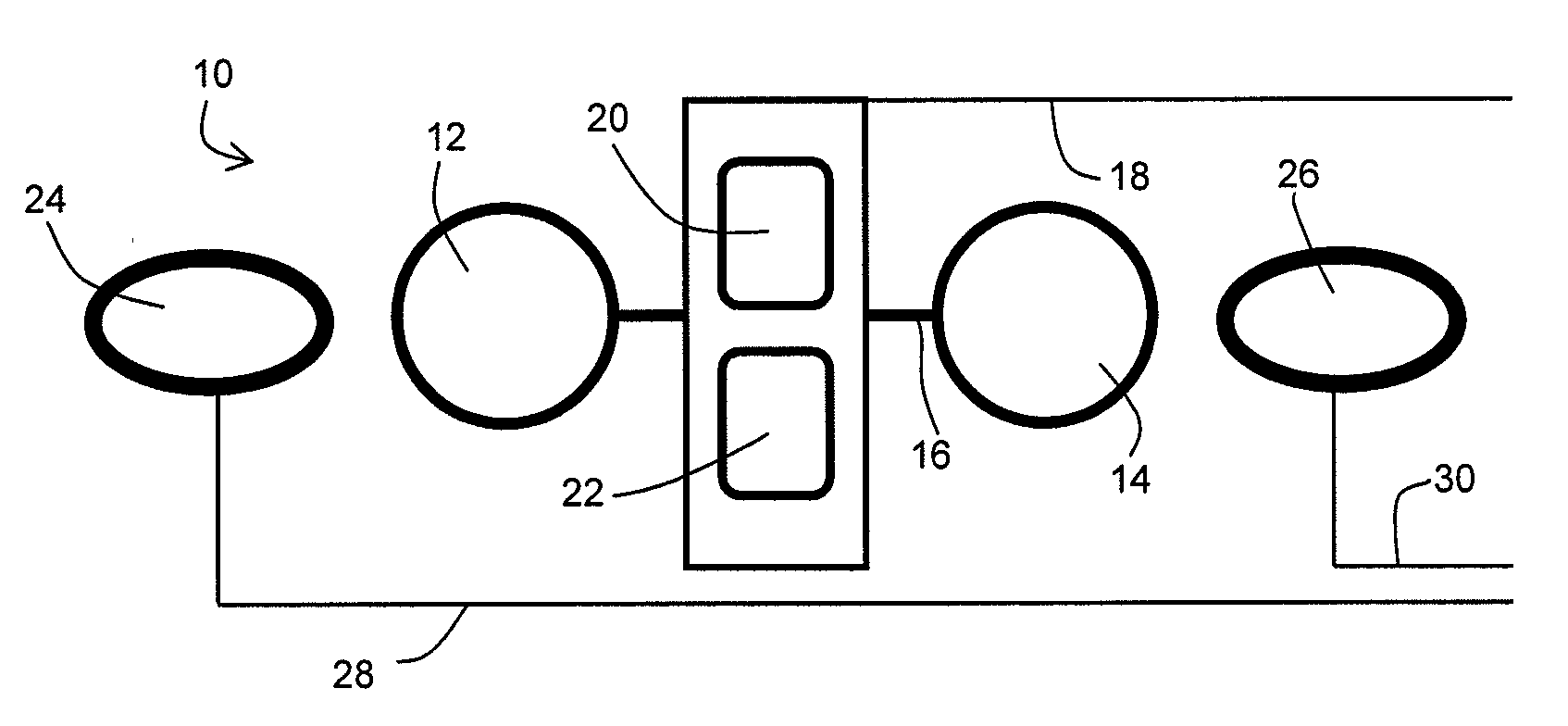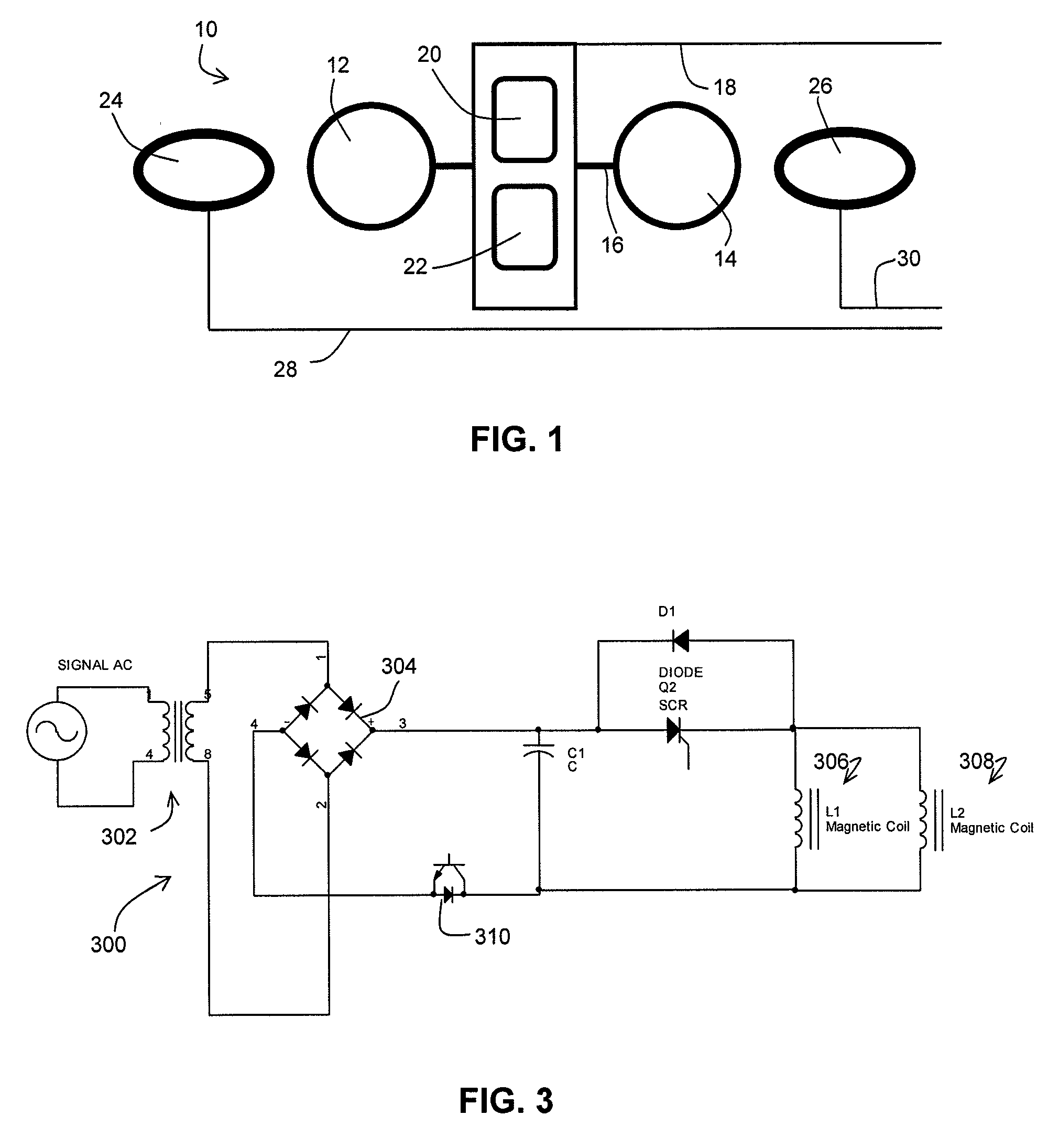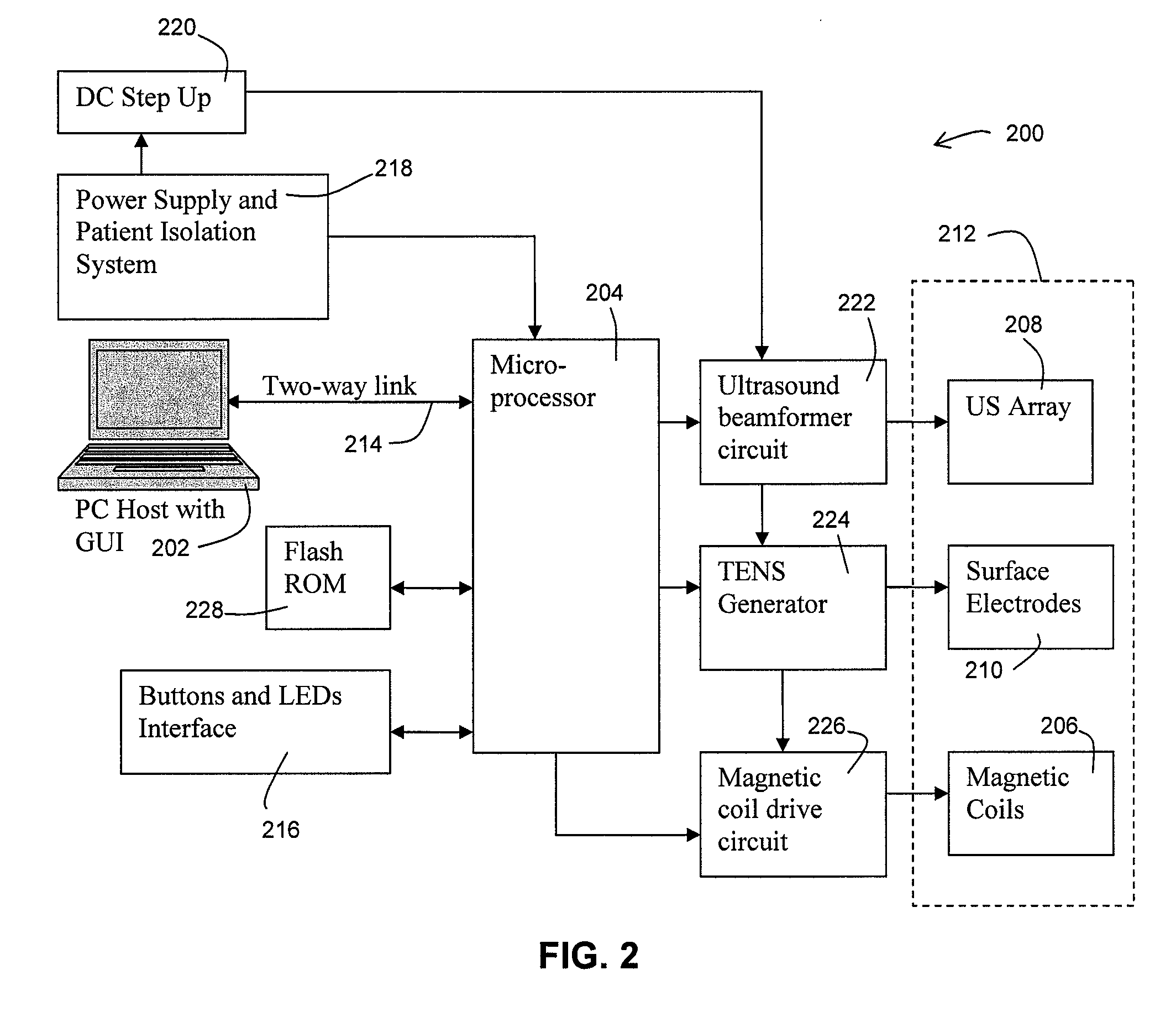Device and Method for Non-Invasive, Localized Neural Stimulation Utilizing Hall Effect Phenomenon
a localized neural and non-invasive technology, applied in the field of non-invasive localized neural stimulation utilizing hall effect phenomenon, can solve the problems of nerve damage in the insertion path, do not address endocrine modulators such as leptin, etc., and achieve the effect of improving non-invasive stimulation and transcutaneous electrical nerve stimulation
- Summary
- Abstract
- Description
- Claims
- Application Information
AI Technical Summary
Benefits of technology
Problems solved by technology
Method used
Image
Examples
Embodiment Construction
[0074]FIG. 1 shows schematically an interface between a stimulation device and a patient. The interface 10 has two magnetic coils 12 and 14 with opposite polarity which together generate a magnetic field in the shape of a torus. In this embodiment, the distance between the two magnetic coils may be varied as desired. In other embodiments, the distance between the magnetic coils may be fixed. Coils 12 and 14 connect to a controller (not shown) via conductors 16 and a conduit 18. In use, coils 12 and 14 may be adhered to the skin or other tissue surface of the patient.
[0075]One or more ultrasound sources are disposed in the center of interface 10. In some embodiments, the ultrasound sources will be focused on the axon of interest to create a Hall Effect current. The ultrasound source may be a single transducer, a con-focal transducer, two separate transducers, or two separate arrays operating at slightly different frequencies, with a resultant wave at the difference frequency represen...
PUM
 Login to View More
Login to View More Abstract
Description
Claims
Application Information
 Login to View More
Login to View More - R&D
- Intellectual Property
- Life Sciences
- Materials
- Tech Scout
- Unparalleled Data Quality
- Higher Quality Content
- 60% Fewer Hallucinations
Browse by: Latest US Patents, China's latest patents, Technical Efficacy Thesaurus, Application Domain, Technology Topic, Popular Technical Reports.
© 2025 PatSnap. All rights reserved.Legal|Privacy policy|Modern Slavery Act Transparency Statement|Sitemap|About US| Contact US: help@patsnap.com



